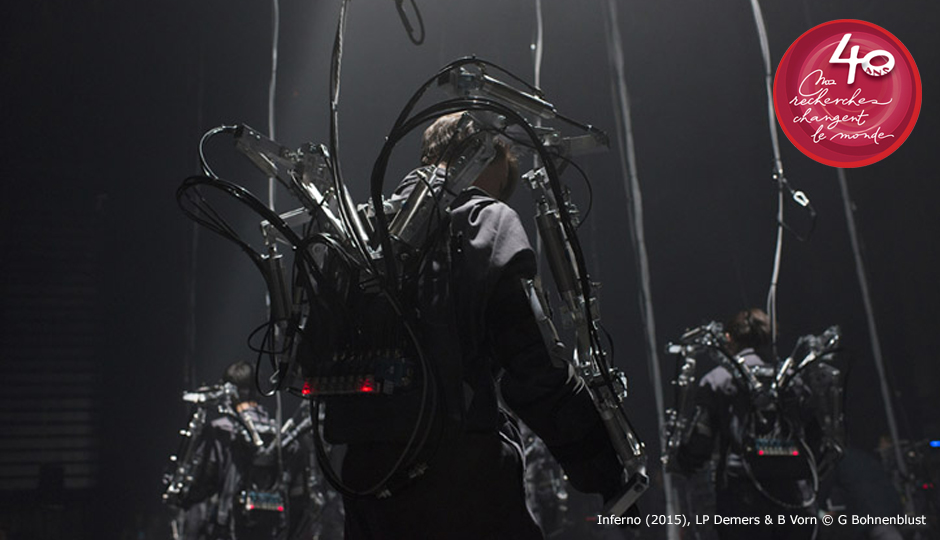Can robotic art performances elicit thought and emotion in their audience? How can robots be cast in such a way as to arouse empathy among viewers? Through his works, Bill Vorn, an electronic arts researcher at Concordia University, is expanding our knowledge of robotic art and our understanding of the relationships between humans and machines, at a time when human-machine interactions are becoming increasingly frequent.
Bill Vorn is expanding our knowledge of robotic art and our understanding of the relationships between humans and machines.
In the participative robotic performance Inferno, produced in collaboration with electronic artist Louis-Philippe Demers, Bill Vorn explores human-machine interactions. Participants are invited to don robotic exoskeletons that partially control their movements. The audience thus becomes an active part of the artistic performance, with gestures imposed in part by the exoskeleton. This study showed that, after overcoming their initial reluctance, participants enjoyed being one with the machine and letting it guide their movements.
Another of Vorn’s projects, Copacabana Machine Sex, is a cabaret-style mechanical dance performance executed entirely by robots with abstract humanoid forms. The challenge: to make the viewers forget they are robots and let their imaginations take over. Music and staging are complementary instruments of choice that help the movements of the robots create emotion in the viewers.
These research/creation projects have inspired the artistic community and have a global impact. For example, within one year after Inferno was performed at a Beijing art school, the school had introduced a course in robotics. The value of these projects ultimately lies largely in the reception of the works by the audience, which has a great deal to teach the researchers-creators.
To see images and videos: http://www.billvorn.com




